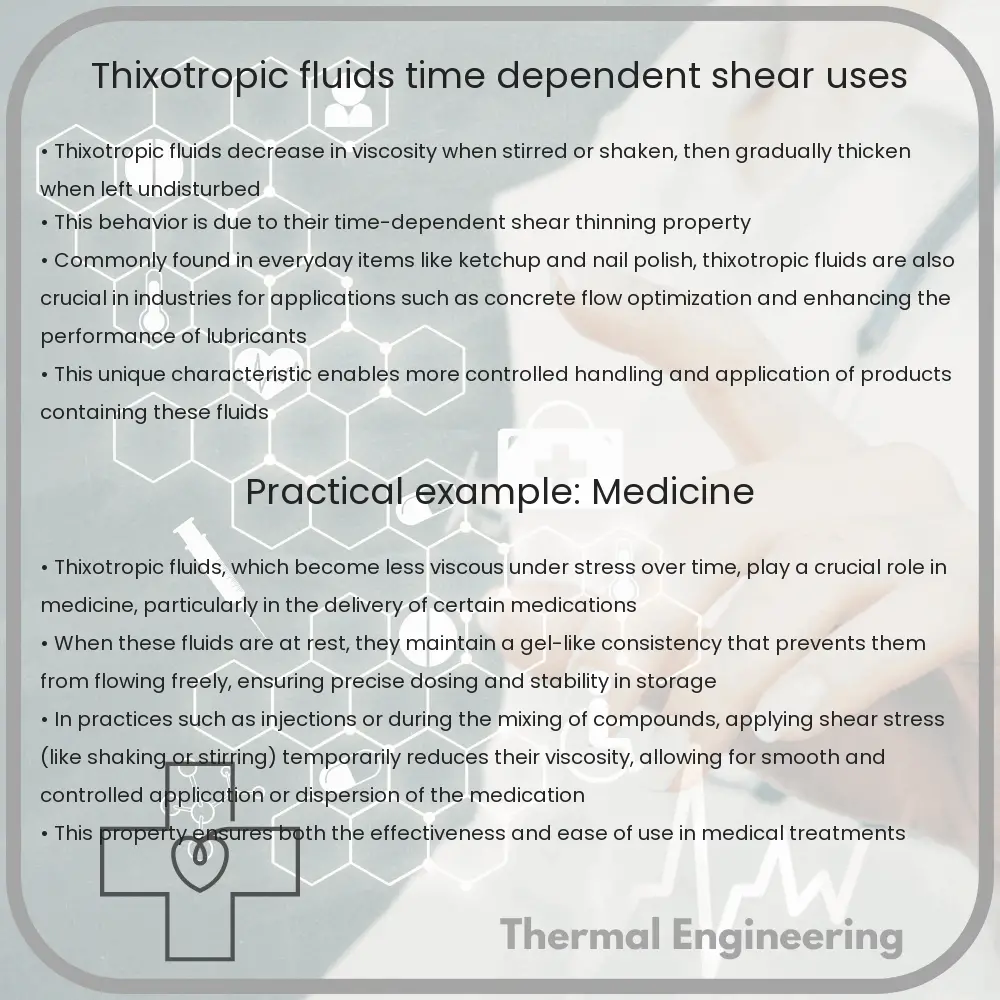Learn about thixotropic fluids, non-Newtonian substances with time-dependent shear thinning properties and diverse industrial applications.

Understanding Thixotropic Fluids: Time-Dependent Shear and Practical Uses
Thixotropic fluids are a type of non-Newtonian fluid that exhibit time-dependent shear thinning properties. Unlike Newtonian fluids, whose viscosity remains constant regardless of the stress applied, thixotropic fluids change their viscosity with variations in shear rate over time. This characteristic makes thixotropic fluids of great interest in various engineering and industrial applications.
What Are Thixotropic Fluids?
Thixotropy is a phenomenon where the viscosity of the fluid decreases over time under constant shear stress. Once the shear stress is removed, the fluid gradually returns to its original viscosity. This reversible and time-dependent change is due to the fluid’s internal structure being broken down when under shear and rebuilt when at rest.
Mechanical Behavior and Properties
The defining feature of thixotropic fluids is their time-dependent shear thinning behavior. When a shear force is applied, the fluid undergoes a decrease in viscosity, which can be described by the following general equation:
η(t) = η0 – k∗tn
Where:
- η(t) is the viscosity at time t
- η0 is the initial viscosity
- k is a constant reflecting the rate of viscosity decrease
- n is an exponent indicating the dependence on time
This behavior is typically observed in fluids where the internal structure or microstructure can be temporarily broken down by applying a force, such as in gels or suspensions.
Key Applications of Thixotropic Fluids
- Paints and Coatings: Thixotropy is advantageous in paint formulations, enabling easy application (lower viscosity under shear) while preventing drips and sags once the paint is applied (higher viscosity at rest).
- Pharmaceuticals: Certain gels and creams used in pharmaceuticals exhibit thixotropic properties to ensure they are easy to spread during application but remain in place thereafter.
- Food Industry: Some sauces and dressings are designed to be thixotropic so they can be poured easily and then thicken when on the plate.
- Construction Materials: Concrete and mortars can exhibit thixotropic behavior, essential for ensuring they are workable when being mixed or pumped but stable when applied.
- Drilling Fluids: Used in the oil and gas industry, drilling fluids must possess thixotropic properties to maintain low viscosity for easy pumping down the drill pipe and increase viscosity to suspend and transport cuttings to the surface.
Advantages and Challenges
Thixotropic fluids offer several advantages in industrial and engineering applications, such as improved handling and application properties, better stability in variable shear conditions, and enhanced performance characteristics aligned with specific use-cases. However, their design and formulation require precise control over their thixotropy which can be sensitive to factors like temperature, pH, and concentration of components.
In conclusion, thixotropic fluids are key in numerous applications across various industries, leveraging their unique property of reversible viscosity to enhance product functionality and user experience. Understanding these fluids’ behavior under different conditions is crucial for optimizing their performance and broadening their application spectrum.